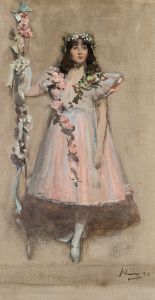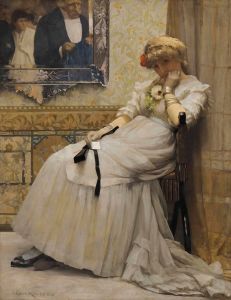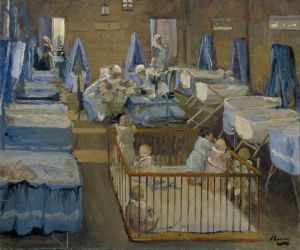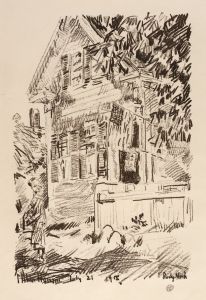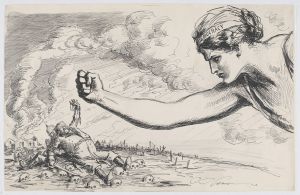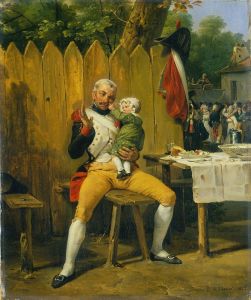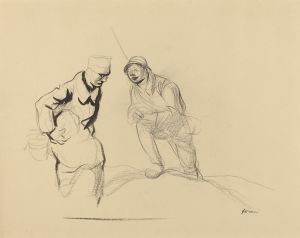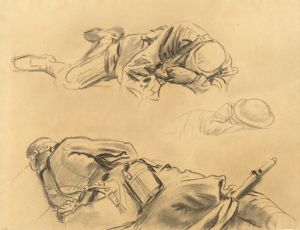
The Cemetery, Etaples, 1919
A hand-painted replica of Sir John Lavery’s masterpiece The Cemetery, Etaples, 1919, meticulously crafted by professional artists to capture the true essence of the original. Each piece is created with museum-quality canvas and rare mineral pigments, carefully painted by experienced artists with delicate brushstrokes and rich, layered colors to perfectly recreate the texture of the original artwork. Unlike machine-printed reproductions, this hand-painted version brings the painting to life, infused with the artist’s emotions and skill in every stroke. Whether for personal collection or home decoration, it instantly elevates the artistic atmosphere of any space.
"The Cemetery, Etaples, 1919" is a painting by the renowned Irish artist Sir John Lavery. This artwork captures a poignant scene from the aftermath of World War I, reflecting the somber mood and the widespread grief that followed the conflict. Sir John Lavery, known for his portraiture and war-related works, was an official war artist during World War I, a role that allowed him to document various aspects of the war and its impact on society.
The painting depicts a cemetery in Étaples, a town in northern France that was significant during the war due to its proximity to the Western Front. Étaples was home to a large military camp and several hospitals, serving as a crucial logistical and medical hub for the Allied forces. The cemetery in Étaples became the final resting place for many soldiers who succumbed to their injuries or illnesses during the war.
Lavery's work is characterized by its attention to detail and its ability to convey emotion through composition and color. In "The Cemetery, Etaples, 1919," Lavery uses a muted color palette to reflect the somber and reflective nature of the scene. The painting likely features rows of graves, marked by simple headstones, set against a backdrop that may include elements of the landscape typical of the region. The choice of colors and the composition would have been intended to evoke a sense of loss and remembrance, capturing the collective mourning of a generation affected by the war.
As an artist, Lavery was deeply affected by the war, and his works from this period often explore themes of sacrifice, memory, and the human cost of conflict. His role as a war artist allowed him to witness firsthand the realities of war, and his paintings serve as historical documents that offer insight into the experiences of those who lived through this tumultuous time.
"The Cemetery, Etaples, 1919" is part of Lavery's broader body of work that includes portraits of notable figures, scenes from the war, and depictions of everyday life. His contributions to art during and after the war have been recognized for their historical significance and their ability to capture the emotional landscape of the era.
Lavery's work, including this painting, is held in high regard and can be found in various public and private collections. His paintings continue to be studied and appreciated for their artistic merit and their role in documenting a pivotal moment in history. Through his art, Lavery provides a window into the past, allowing contemporary audiences to reflect on the enduring impact of World War I and the importance of remembering those who were affected by it.






